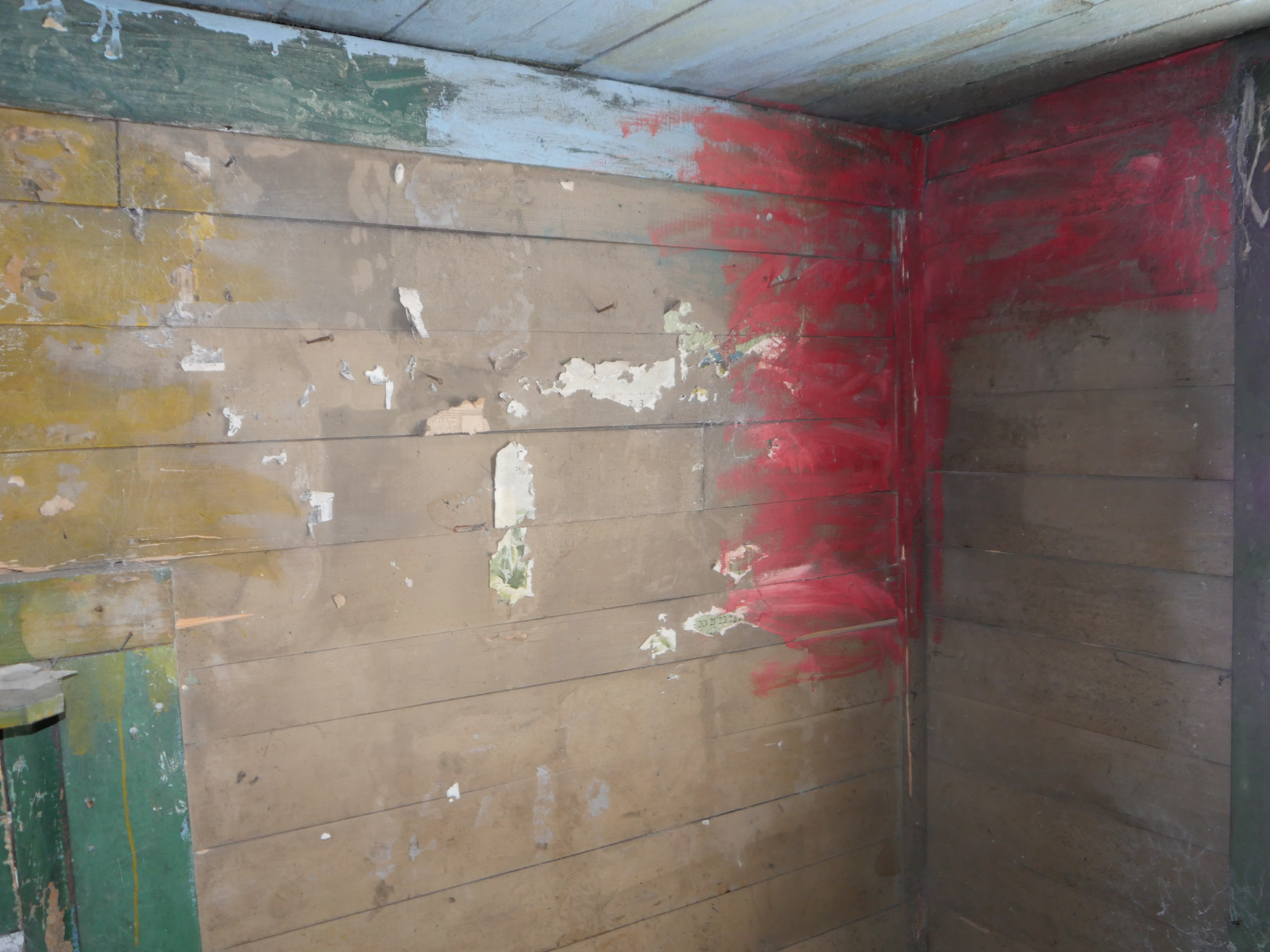Myra Palmer, known as “Mocking,” lived in Friendfield Village for a long time, from the earliest days of the Baruch era until the mid-twentieth century. Ella Severin, Belle Baruch’s partner, who arrived at Hobcaw in 1951, knew Mocking. By then Ms. Palmer was an elderly woman living alone in this house. In this video clip, Lee Brockington, Belle W. Baruch Foundation interpreter, shares stories about Myra "Mocking" Palmer.

The blue paint on the ceiling of this room in Mocking's House is called “haint blue.” Connected to African spiritual beliefs, it survives today as a feature of Gullah culture. In Blue Roots: African-American Folk Magic of the Gullah People, author and Lowcountry native Roger Pinckney explains that Christian burial practices forced upon enslaved Africans violated their rituals, with terrible, lasting consequences. In many West African countries a second funeral was performed a year after a loved one’s death, when family members held a feast and exhumed the bones of the departed to lay them in their final resting place. Without this second ceremony a spirit would be trapped between the world of the living and the dead.
These restless spirits, known as “hants” or “haints, could cause great harm to the living, and enslaved people developed ways to protect themselves. They painted their doors and window frames “haint blue,” said to guard the residents of the home from evil. According to Pinckney, the color originated during the colonial period with the production of indigo. Enslaved people used the dregs from the indigo boiling pots as paint. Blue bottles hung on trees in the yard performed a similar function, trapping spirits before they could enter the house. Bottle trees have become a popular feature of garden design.
The homes in the African-American villages of Hobcaw Barony never had refrigeration. Well into the twentieth century, residents of Friendfield Village preserved and stored perishable and seasonally available food using methods handed down from family members. These universal and ancient techniques of preservation included drying, curing, smoking, and salting. A reserve of salted fish, smoked ham, pickled vegetables, dried beans, fruits, and berries was the equivalent of a modern-day pantry stocked with canned goods.
Ice was a rare treat, especially during the sweltering South Carolina summers. Robert McClary, who lived at Hobcaw Barony from 1937-1949, recalled burying blocks of ice in the sand to preserve it for a day or two.
During the plantation era, a planter would choose a slave, an adult male who was good at locating the best oysters, clams and shrimp. He also was proficient at hunting, a good shot who brought in deer, duck, marsh hens and rice birds (bobolinks) for the cooks to prepare.
Called "creek boys," they also prepared oyster roasts, held outdoors with oysters laid out in a horseshoe, with a fire of carefully selected oak in the middle. Clams were enjoyed but not cooked as they were in New England. Instead they were opened and broiled in the half-shell in an outdoor oven with a bit of bacon on top. When the bacon curled and sizzled the clams were ready.
Before WWI these "creek men" were still a vital part of village life. They also taught inlet or beach homeowners and their guests to fish. Creek men often became cooks and did both jobs to feed their families...Men with seine nets went out in wooden boats. These deep row boats with cedar oars led men out into the ocean where they circled and set nets, resulting in a catch that might total 100,000 pounds. The sheer strength of the men made it possible.
Lee Brockington, Hobcaw Barony Senior Interpreter, The Georgetown Times, April 20, 2005